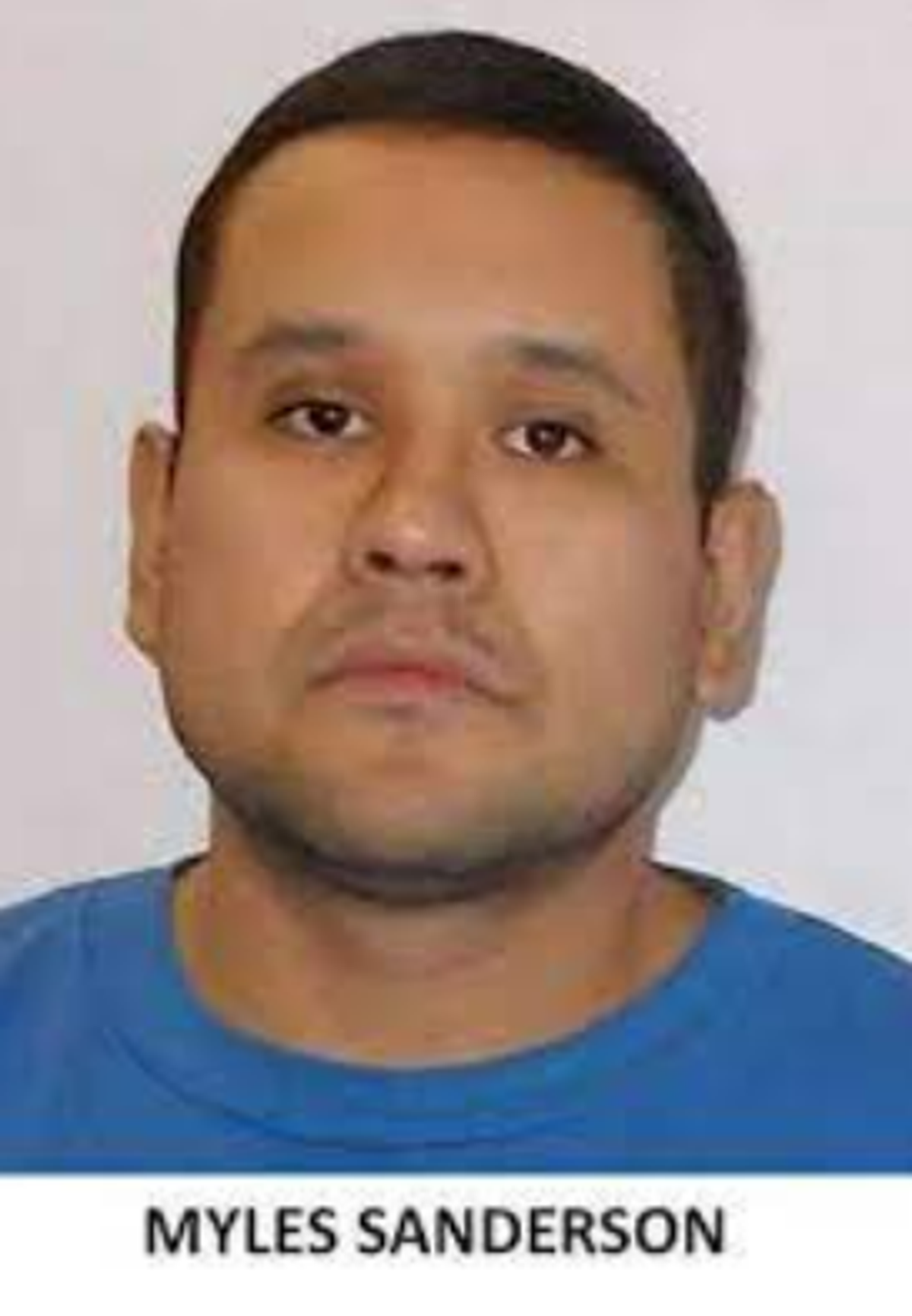
Myles Sanderson, a suspect in the weekend stabbing spree that killed 10 and wounded 19 people across a First Nations community in rural Canada, died from self-inflicted inflected wounds after being arrested on Wednesday, according to officials.
An unnamed Canadian official told The Associated Press that Mr Sanderson died after police rammed his car off the road.
The suspect was taken away alive in an ambulance before later succombing to his injuries, Global News reports, citing multiple unnamed law enforcement sources.
The 32-year-old was apprehended around 3.30pm CST on Wednesday near the town of Rosthern, Saskatchewan, according to the Royal Canadian Mounted Police (RCMP).
“The Saskatchewan RCMP would like to thank the public for their dillegence in providing pertinent information about potential sightings of Myles Sanderson,” the police said in a statement.
The suspect was thought to be seen earlier in the day in the Wakaw and Prince Albert areas, with the individual described as driving a white Chevrolet and carrying a knife, according to the Saskatchewan RCMP, who later cancelled an emergency alert related to the spotting.
Unofficial video obtained by the CBC appears to show multiple armed officers in bulletproof vests surrounding a white Chevy truck pulled onto the side of a road.
The arrest brings to a close the massive, four-day manhunt for Sanderson and his brother Damien, who was found dead on Monday from wounds that did not appear to be self-inflicted, police said.
Saskatoon Tribal Council chief Mark Arcand, who lost his sister and nephew in the killings, said the arrests mean the community can begin to recover from its trauma.
"Now people can start to feel safe again but also now is the time for healing to begin," he said in a statement.
“We are broken, but we’re not defeated,” he added at a press conference on Wednesday.
Saskatchewan premier Scott Moe thanked police for their efforts.
“To the men and women in uniform who have worked day and night to track down and arrest this dangerous criminal, thank you,” he said on Wednesday in a statement. “We owe you all a great debt of gratitude.”
Police are investigating if Sanderson killed his brother.
The 32-year-old had been charged with first-degree murder, attempted murder, and breaking and entering.
The stabbing rampage took place across 13 different crime scenes, many of which were located inside the James Smith Cree Nation and the nearby village of Weldon.
The First Nation community has about 3,400 members, with 1,800 members living on its territory.
Those killed in the stabbings, one of the worst mass killings in Canadian history, are: Bonnie Burns, 48; Carol Burns, 46; Earl Burns, 66; Gregory Burns, 28; Lydia Gloria Burns, 61; Thomas Burns, 23; Christian Head, 54; Lana Head, 49; and Robert Sanderson, 49, all of the James Smith Cree Nation; and Wesley Petterson, 78, of Weldon.
The stabbing suspect had a violent history, according to court records.
As an adult, Myles Sanderson had been convicted of 59 different crimes, including assault, assaulting a police officer, and robbery. He had a lifetime weapons ban.
Nonetheless, he was released in February while serving a four-year sentence for kicking an officer in the face who was arresting him on claims of domestic violence in 2018.
Canadian parole board found that Sanderson would “not present an undue risk” to the community.
“The Board is satisfied that your risk is manageable in the community, if you live with your [blacked out] maintain sobriety and employment, and continue with developing supports, including getting therapy,” the board wrote, according to documents obtained by Global News.
The parole board said this week it would review how Sanderson came to be released.
The Sanderson brothers’ mother said she wasn’t sure what led to the violence, but apologised for the harm its caused.
"I want to apologise for my son, my sons," she said in an interview with CBC News. "We don’t know the whole story, but I want to apologise to everybody that was hurt and affected by this terrible situation."










